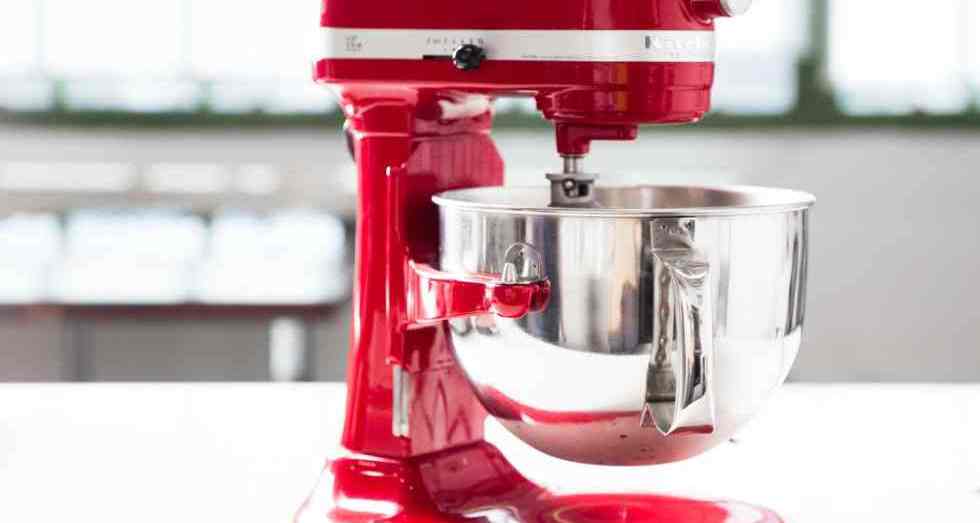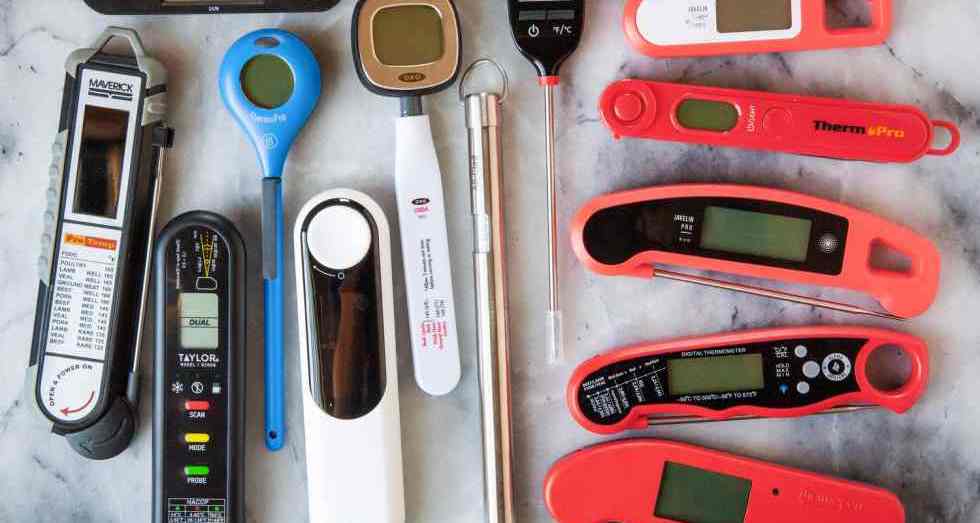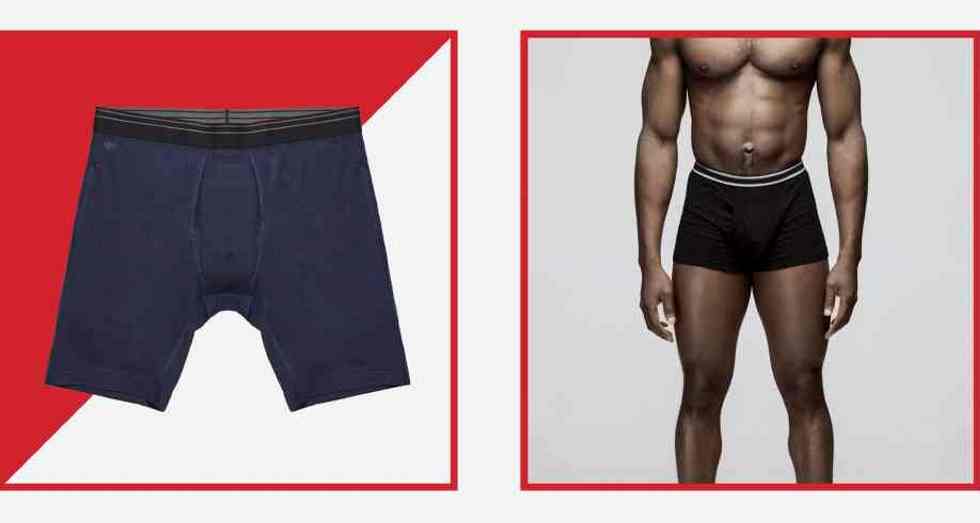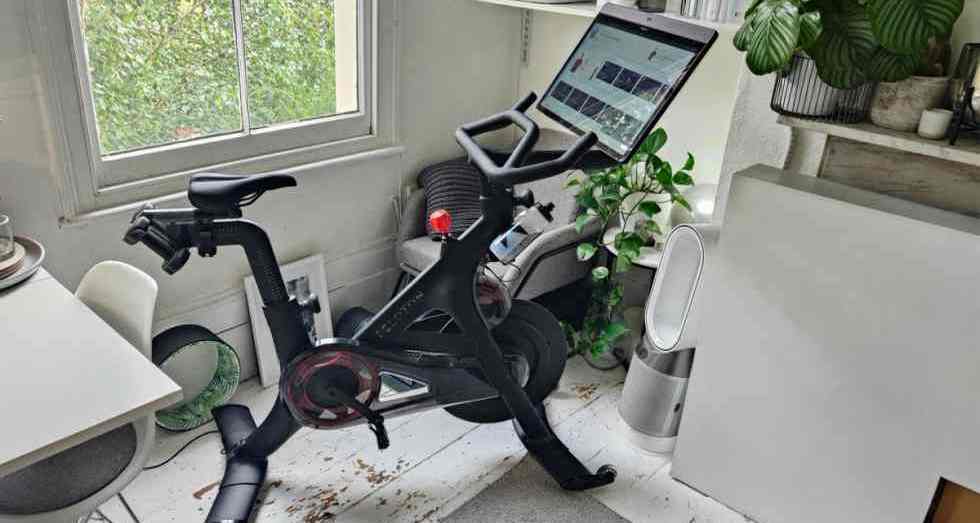As a broke college grad in New York, I spent years cooking in my apartment with nothing but a dinged-up, 3-quart aluminum saucepan that my dad found languishing in his basement. That bad boy has at least 20 years on me—and I still use it today.
The point is: A lot of people can get along fine with a saucepan. But step into any fancy, French-inflected fine dining kitchen, and you’re likely to come across a saucier or two. These shallow, slightly flared pots with rounded sides are often the pan of choice for cooks looking to stir risotto, whisk gravy, or slowly reduce demi-glace. But what exactly makes a good saucier? Why would you need one? (We think you do.) And, finally, what saucier should you buy?
The Winners, at a Glance
The Best Overall Saucier: Made In Stainless Clad 3-Quart Saucier
:max_bytes(150000):strip_icc()/1_ffeb2f98-4cc3-4462-a20c-f35e45bf5fe2_1016x-5e73f9807fad4a03bb7e90e2fe0a92ad.jpg)
Made In Stainless Clad Saucier
The Made In saucier had the best balance of weight, ergonomics, and performance of all the models tested. Its broad surface area was ideal for stirring, and it even comes with a 45-day trial period.
The Best Saucier If You Care About Looks: Great Jones “Saucy”
:max_bytes(150000):strip_icc()/saucy_45_30394_0e5eca9e-dfcf-4710-8a26-fe5214469cc2_947x947_crop_center2x-f467b4773267477a8a272d8ee8563732.png)
Great Jones Saucy
The Great Jones “Saucy” is a beautiful pot that scored high marks in heat responsiveness, ease of stirring, and cleaning. It was a little precious, but it got the job done—at an affordable price point, to boot.
What's a Saucier? And Why Do You Need One? (Hint: It’s more than a fancy pot with a fancy name.)
A saucier takes its name from the classical French brigade system: A saucier or sauté chef is responsible for—among other duties—preparing sauces for service. Many of these sauces include French mother sauces, which require whisking a roux or prolonged simmering. A saucier has rounded edges and shorter sides than a traditional saucepan; in many cases, the sides even flare out slightly. These features make a saucier ideal for repetitive actions like whisking and stirring, which are essential to making something like Mornay sauce or cooking starch-bound products like pastry cream. Another classic example is risotto. Constant stirring is tricky in a normal saucepan, since the grains can get stuck in the sharper corners of the pot. Using a saucier circumvents this problem, since your spoon or spatula can get into every nook and cranny of the pot with ease.
Additionally, the shorter walls of a saucier provide two benefits. The shallow clearance makes evaporation a little more efficient*, so reducing sauces like demi-glace is easier. Second, the short rounded sides make it possible to toss certain foods like pasta or risotto in their final emulsifying step.
*Sauciers also typically have heavier, more conductive bottoms and thinner walls, so heat tends to be more evenly distributed and retained.
So, do you need a saucier? If you put a premium on easy stirring, seamless whisking, and making consistent, perfect sauces, but also want a versatile piece of cookware for soups, broths, purées, cooking grains, and more, then a saucier is for you (as it can do all a saucepan can and then some). If all you need is a pot to boil water—and seeing as you're reading this review, that's likely not you— then you probably don’t need to be so discerning and can stick with a standard saucepan.
:max_bytes(150000):strip_icc()/Sauciers_Made_In_03-83159eaf676c440b81c29dbc597a53fe.jpg)
Serious Eats / Tim Chin
The Criteria: What We Look for in a Saucier
At minimum, a good saucier should feature sufficiently curved corners that can accommodate all kinds of stirring and whisking. Otherwise, you’re just paying for a fancy saucepan. The surface area should be large enough that it doesn't require constant stirring in order to evenly cook food; and food should spread out enough so that it doesn't pile up and start steaming. Additionally, heating should be consistent and the bottom should be relatively resistant to hot spots or scorching. (Many sauciers feature alternating layers of aluminum and stainless steel cladding, since aluminum provides more even, consistent heat conduction, while stainless steel provides durability.)
Ergonomically, a good saucier should be slow and steady, but also nimble. That might seem like a vague and counterintuitive aphorism, but hear me out: Sure, a saucier should be able to simmer sauces and reduce liquids to glazes with ease; but it should also be designed to meet the demands of vigorous stirring, whisking, and possibly tossing of ingredients.
Whether you’re getting the lumps out of pastry cream or aggressively tossing a risotto to emulsify butter and cheese, a saucier should feel comfortable—almost like an extension of your hand. That means it should also be both ergonomic and light enough for the average user to handle.
Why You Should Trust Us
I’ve used sauciers at one point or another, in all sorts of settings over the course of my career as a cook—in restaurant kitchens, in test kitchens, and at home. And while I can’t make any claim to French heritage, I don’t think that disqualifies me from making some empirical observations about ultra-specialized sauce pots.
The Testing
Test 1: Making Pastry Cream
:max_bytes(150000):strip_icc()/Sauciers_Pastry_Cream_03-3446fffa5d32494c81c8a3d240635038.jpg)
Serious Eats / Tim Chin
Making pastry cream is one of the benchmark uses for a saucier. The process requires constant whisking and steady heat application to produce a result that’s smooth, creamy, and free of lumps. Additionally, the mixture must be heated for long enough to neutralize alpha-amylase, an enzyme that would otherwise cause the custard to break down after cooking. For this test, I prepared identical batches of pastry cream in each of my saucier models, using the same burner on the same heat setting. I recorded the time it took to reach 175°F (at which the mixture begins to bubble and cook off alpha-amylase), and noted any indications of scorching, hot spots, and differences in handling.
High performers in this category like the Made In and Great Jones sauciers provided a seamless, enjoyable whisking experience with no hitches in the overall motion of stirring. They were also highly responsive pans that reached the target temperature a full minute faster than other models, on average. Due to that responsiveness, these models also exhibited slight tendencies for hot spots—but no scorching or sticking occurred.
In contrast, underperformers like the Demeyere Atlantis saucier were excruciatingly slow to heat the mixture, despite showing very even heating and virtually no hot spots. With this pan, I also noted a slight hitch in the whisking motion at the 6 o’clock position (an irritating scrape against the grain of the pan material), which was more of a mild annoyance than a functional defect. Along with the Breville Thermal Pro Stainless Steel model, the Demeyere was also exceptionally heavy in comparison to the other models. Picking up these sauciers to scrape out the ingredients was notably cumbersome (and as an avid rock climber, I’m no slouch when it comes to wrist strength).
Test 2: Making Risotto
:max_bytes(150000):strip_icc()/Sauciers_Risotto_05-80a4d9237fb74162bcd2d66756e6d37f.jpg)
Serious Eats / Tim Chin
Like pastry cream, proper risotto requires constant stirring and supervision. It can be easy to neglect the sharp corners of a standard saucepan or pot when stirring, which results in rice sticking to those edges and forming a film. In the worst case, those stuck-on spots of rice begin to scorch. For the purists, risotto also offers the opportunity to finish the rice all’onda (literally “on the wave”), by aggressively tossing the rice to emulsify it with butter and cheese. This step ensures that the risotto is creamy, with a proper consistency that falls off the spoon in smooth ribbons rather than globs.
I made identical batches of parmesan risotto, standardized by ingredient weight in grams, and noted the overall time it took to complete the process. I looked for signs of any hot spots, scorching, or excessive browning of the grains over time as I stirred. Finally, I finished each batch using the all’onda method, tossing the rice with butter and cheese until it reached the proper consistency.
All models in this test produced good risotto, with little to no observable scorching or sticking. The top performers were, again, the Made In saucier and the Great Jones “Saucy”. As the two most responsive sauciers, these pans made risotto about 8 to 10 minutes faster than the slowest performers. But due to that responsiveness, there was evidence of some extra browning of the grains in comparison to other models (which may be undesirable, depending on your tastes). Stirring was seamless and enjoyable, and due to the lighter weight of these pans, tossing the rice all’onda was intuitive and relatively effortless. The Made In saucier has a slightly larger surface area, so stirring was more comfortable than in the Great Jones model. Trailing just behind these two models, the Misen saucier performed almost as well, but I docked a few points for its decreased surface area, as stirring felt a little cramped in this pan.
:max_bytes(150000):strip_icc()/Sauciers_Risotto_07-ad63218d80e14ff99a923a103bd7ae52.jpg)
Serious Eats / Tim Chin
In contrast to the lightweight, responsive models, the Demeyere Atlantis saucier and Breville Thermal Pro Stainless Steel Sauce Pan were sluggish behemoths. On the plus side, they produced uniform, blond grains of risotto with absolutely no signs of browning. Due to these pans’ increased weight and thicker gauge of the conductive bottom surface, the heating was uniform throughout cooking. The Demeyere felt slightly smoother when stirring, but both had sufficient surface area to get the job done. Unfortunately, finishing the risotto all’onda took a considerable amount of elbow grease. Even with a firm, two-handed grip, I felt like I was throwing up a cinder block full of hot mush in each case. I didn’t necessarily feel connected to the pans, and instead relied on hand-eye coordination to catch the rice as it cascaded back to the center. (The Breville does provide a helper handle, which helped; but the motion still felt awkward.)
Finally, the increased weight of these sauciers made it exceptionally difficult to scrape the contents out while holding the saucier with the other hand. Even employing all the tricks I had in my bag (resting the pan on the receiving bowl or container, or bracing the handle against my abdomen/belt), holding these pans full of risotto proved to be physically challenging.
Test 3: Making Pâte à Choux
:max_bytes(150000):strip_icc()/Sauciers_Choux_02-9eabecc8cbbd435d8dfbed11587ffe07.jpg)
Serious Eats / Tim Chin
Making pâte à choux can be a labor of love: The beginning stages of the technique inevitably make a controlled mess as the dough forms a starchy, sticky film on the bottom of the pot. This is a great use case for a saucier, since the rounded edges ensure you can cook the dough evenly and minimize unwanted accumulation at the corners. In general, the starchy film is susceptible to browning or burning, and is sensitive to hot spots. It’s also notoriously difficult to clean a pot caked in choux dough without soaking it or some earnest scrubbing. In other words, the technique stretches the limits of a saucier’s capabilities.
:max_bytes(150000):strip_icc()/Sauciers_Choux_HeroHorizontal-7af6fa1f4b3f48d8b3db50de1ac33a10.jpg)
Serious Eats / Tim Chin
I made batches of pâte à choux in each saucier, recording the time it took the dough to reach a target temperature of 175°F (80°C). I noted any hot spots or signs of scorching. Finally, I gave each pot a 10-minute soak in 120°F water, followed by a rigorous scrubbing with a scouring pad.
While all sauciers accomplished the task, the best performer, the Made In saucier, provided ample surface area for stirring, while the pan itself showed even heating and no signs of hot spots or scorching. It was also easy to clean, and the starchy film came off without much effort. Heavier models like the Demeyere, performed well, and the film tended to stick less to the thick bottom surface; on the other hand, the cooking process was slightly slower.
Limitations of This Review
As with many equipment reviews of this nature, durability is a common question. I can’t make any judgements on the long term durability of these models based on my testing. I only have company-provided specifications, which include metrics like weight, construction, and cladding. Still, all of the models tested are clad in stainless steel—a durable, long-lasting material. So, in theory, they should all last a good while.
The Best Induction Cookware, According to Our Rigorous Reviews
All models tested were also rated induction-friendly. As a cursory test, I did find that all of these models were magnetic.
The Best Overall Saucier: Made In Stainless Clad 3-quart Saucier
:max_bytes(150000):strip_icc()/1_ffeb2f98-4cc3-4462-a20c-f35e45bf5fe2_1016x-5e73f9807fad4a03bb7e90e2fe0a92ad.jpg)
Made In Stainless Clad Saucier
What we liked: The Made In saucier was consistently a top performer in every test. Even though it was the lightest pan I tested, heat conduction was uniform and produced little to no observable hot spots. Stirring in this saucier was a dream, thanks to its wide surface area (7 inches in diameter at the base, flaring out to 10 inches from lip to lip). The handle was also among the longest tested and felt comfortable to hold. That combination of comfort, light weight, and large surface area made tossing risotto all’onda an easy task.
Overall, the Made In saucier was just right. It's well balanced, and I felt connected to the pan during my tests. Compared to other models, the comfort is unmatched. I could easily lift the pan with one hand (even when it was full of risotto), so scraping and scooping was an intuitive action. If this were sports, this saucier definitely passed the “eye test”: It checked all of the boxes for ease of handling and stirring. Best of all, it feels like a workhorse—not too precious, worthy of repeated use and abuse for cooks who aren’t afraid to slug it out in the kitchen.
Considering the fair price point, stellar ergonomics, performance in testing, and a generous 45-day trial period, you’d be hard pressed to find a better saucier that suits your day-to-day needs.
What we didn't like: Long-term durability is a question for the Made In, especially given its light weight and the company’s status as a relative newcomer in the direct-to-consumer space. Though I was worried about the riveted construction of the handle, I didn’t find cleaning choux dough off the surface to be difficult, and the metal maintained its texture and shine even after repeated buffing with a scouring pad.
Key Specs
- Weight: 2 pounds 10 ounces
- Layers of Cladding: 5 (stainless steel and aluminum)
- Base Diameter: 7 inches
- Lip-to-lip Diameter: 10 inches
- Depth: 3 1/2 inches
- Handle Length: 8 1/4 inches
- Induction Compatible: Yes
:max_bytes(150000):strip_icc()/Sauciers_Made_In_HeroHorizontal-d24e1536f607418bb89e096ca6b19a1f.jpg)
Serious Eats / Tim Chin
The Best Saucier If You Care About Looks: Great Jones “Saucy”
:max_bytes(150000):strip_icc()/saucy_45_30394_0e5eca9e-dfcf-4710-8a26-fe5214469cc2_947x947_crop_center2x-f467b4773267477a8a272d8ee8563732.png)
Great Jones Saucy
What we liked: The Great Jones “Saucy” is a beautiful pan out of the box. The lid and exterior have a polished, mirror-like finish—it was a trip to see myself so clearly on a piece of cookware. This saucier also comes with plenty of user-friendly features: a helper handle, an easy-pour spigot, and even liquid measurement markings etched into the interior wall. From an aesthetics perspective, this saucier was far and away the best looking model. Most importantly, the “Saucy” performed about as well as it looked, scoring high marks in heat conduction, ease of stirring, and ease of cleaning due to its welded construction. It was the most responsive, fastest cooking model of the bunch, finishing risotto at least 10 minutes faster than the two slowest models.
The easy-pour spigot and etched liquid-measure markings were welcome features, though I didn’t feel they were helpful when dealing with large quantities of food. Its price point is also competitive.
What we didn't like: Despite being slightly heavier than the Made In saucier, the Great Jones “Saucy” exhibited some hot spots in testing. I could attribute this to the lower density of the bottom and distribution of weight across the saucier: While the Made In feels like it has more of its weight at the bottom surface, the Great Jones shows a more even weight distribution between the walls and the bottom.
The primary handle of this saucier—while attractive and eye-catching—felt a little clumsy in the hand. I didn’t feel full control over the pan. Finally, this saucier felt a little too precious at times. I was worried about tarnishing the mirror finish or dinging up the interior. And after scrubbing the inside, I noticed that it began to scratch and lose that mirror-like shine.
Key Specs
- Weight: 3 pounds 1/2 ounce
- Layers of Cladding: Unknown
- Base Diameter: 6 1/2 inches
- Lip-to-lip Diameter: 8 1/2 inches
- Depth: 3 1/2 inches
- Handle Length: 8 inches
- Induction Compatible: Yes
:max_bytes(150000):strip_icc()/Sauciers_Great_Jones_02-037956e6ec0843f98a3698783784db58.jpg)
Serious Eats / Tim Chin
The Competition
- Misen 3-quart Saucier: This was a well-constructed, sturdy saucier that performed reasonably well across all tests. The handle is comfortable and balanced, and stirring was smooth and seamless. Unfortunately, this saucier had the smallest surface area of all models tested: Cooking often felt cramped, and tossing risotto in such a small pan (with relatively tall sides) was tricky. At just over 3 pounds, this saucier feels hefty for being a “smaller” pan. It handles more like a glorified saucepan than a saucier.
- Demeyere Atlantis Saucier (3.5 quarts): The larger surface area of the Demeyere saucier is a welcome feature. Stirring risotto was intuitive and smooth, and heat conduction was the most uniform out of all models tested. But the weight of the pan (3 pounds 13 ounces) could be an issue for some folks—especially without a helper handle. I found myself bracing the handle against my hip when scraping out risotto, or double-fisting the handle and praying that the contents landed safely as I poured. The biggest dealbreaker might be the price: At over $200, the Demeyere Atlantis Saucier is more than double the price of the two winning models.
- Breville Thermal Pro Stainless Steel Sauce Pan (4 quarts): The Breville Thermal Pro took the top spot as the heaviest saucier in the lineup, clocking in just shy of 4 pounds. It’s a full featured pan, with a generous helper handle and etched markings for liquid measurement. Like the Demeyere, this pan had even heat conduction, but it was also slow to cook food and not as responsive as the winners. Overall, it felt like I was cooking in a Dutch oven rather than a saucier. (Though to be fair, Breville markets this as a “sauce pan.”)
- All-Clad D3 Saucier: Unfortunately, this saucier was out of stock at at all major retailers at the time of testing and only available at a jacked up price from a third party Amazon seller. We reached out to All-Clad to see when the saucier would be back in stock, but never got an answer. For years, we’ve recommended this model and it’s been a workhorse of the Serious Eats test kitchen…we just couldn’t get a new one to review. When the All-Clad becomes available, we’ll put it through the same tests and compare it to the Made In and Great Jones sauciers.
FAQs
What is a saucier used for?
Because of its rounded edges and shorter sides, a saucier is a great choice for tasks that involve whisking and stirring, such as sauces, pastry cream, risotto, and more.
What size saucier is best?
For this review, we focused on sauciers that were 3 to 4 quarts, as that’s plenty big for most cooking tasks, like reheating four to six servings of soup. If you want a larger saucier, our overall favorite, from Made In, also comes in a 5-quart size.
What's the difference between a saucepan and a saucier?
A saucepan has taller walls, sharper corners, and a flatter bottom, whereas a saucier has shorter, slightly flared walls and rounded edges.



































